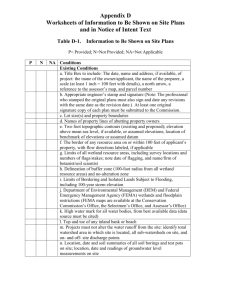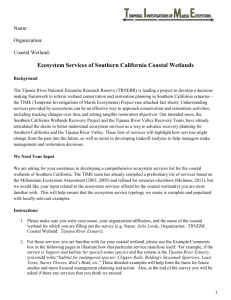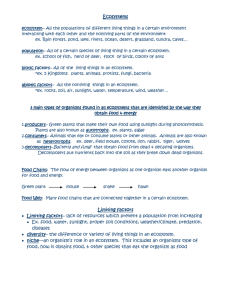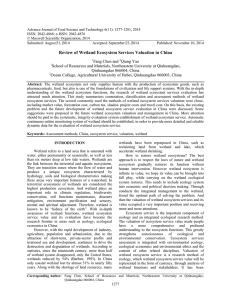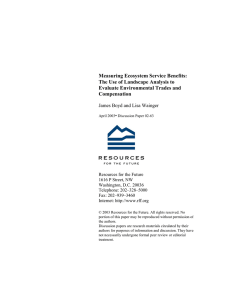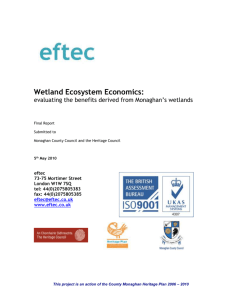MSTP Pretest KEY
advertisement
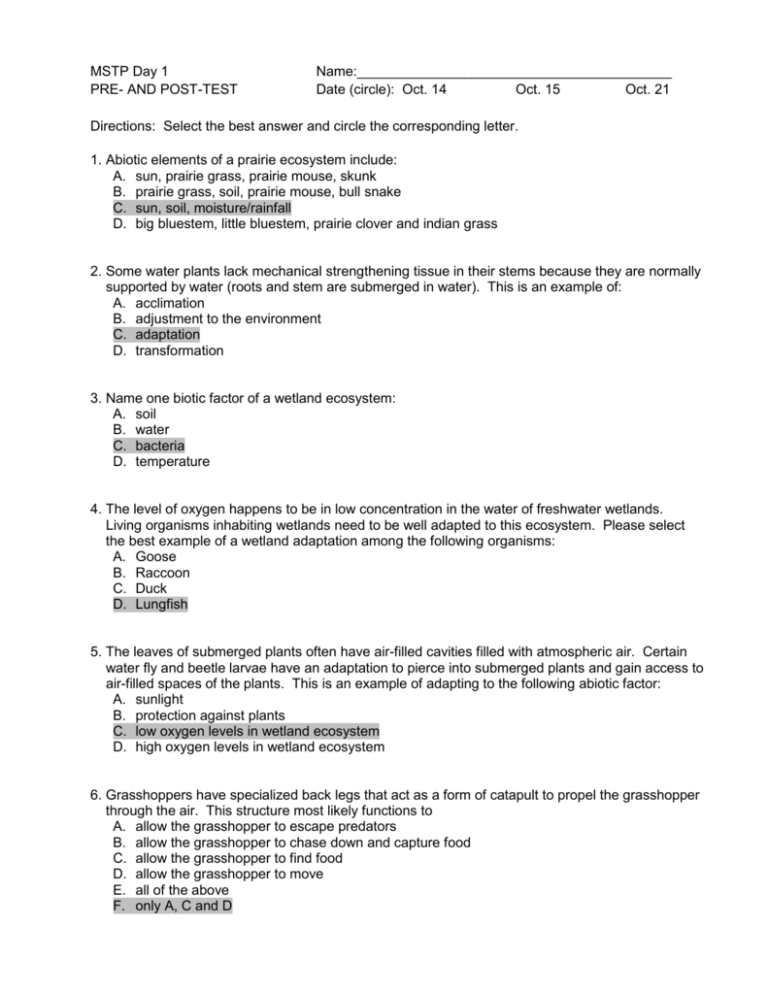
MSTP Day 1 PRE- AND POST-TEST Name:_________________________________________ Date (circle): Oct. 14 Oct. 15 Oct. 21 Directions: Select the best answer and circle the corresponding letter. 1. Abiotic elements of a prairie ecosystem include: A. sun, prairie grass, prairie mouse, skunk B. prairie grass, soil, prairie mouse, bull snake C. sun, soil, moisture/rainfall D. big bluestem, little bluestem, prairie clover and indian grass 2. Some water plants lack mechanical strengthening tissue in their stems because they are normally supported by water (roots and stem are submerged in water). This is an example of: A. acclimation B. adjustment to the environment C. adaptation D. transformation 3. Name one biotic factor of a wetland ecosystem: A. soil B. water C. bacteria D. temperature 4. The level of oxygen happens to be in low concentration in the water of freshwater wetlands. Living organisms inhabiting wetlands need to be well adapted to this ecosystem. Please select the best example of a wetland adaptation among the following organisms: A. Goose B. Raccoon C. Duck D. Lungfish 5. The leaves of submerged plants often have air-filled cavities filled with atmospheric air. Certain water fly and beetle larvae have an adaptation to pierce into submerged plants and gain access to air-filled spaces of the plants. This is an example of adapting to the following abiotic factor: A. sunlight B. protection against plants C. low oxygen levels in wetland ecosystem D. high oxygen levels in wetland ecosystem 6. Grasshoppers have specialized back legs that act as a form of catapult to propel the grasshopper through the air. This structure most likely functions to A. allow the grasshopper to escape predators B. allow the grasshopper to chase down and capture food C. allow the grasshopper to find food D. allow the grasshopper to move E. all of the above F. only A, C and D 7. The change in temperature affects the amount of oxygen or air in wetland waters. The higher the water temperature the lower the oxygen level in the water. How will more sunlight (as a result of seasonal change) sending energy to the water affect the amount of oxygen in the water? When would you anticipate the lowest amount of oxygen in freshwater wetland waters? A. Summer B. Winter C. Combined effect of high temperature and intensive algae growth D. Season and sunlight do not affect water temperature and oxygen content. 8. Name a function of a wetland during extensive lowland flooding (pick the best response): A. habitat for birds B. water purification C. floodplain (surface water storage) D. plant production 9. Ecosystem services are the benefits people obtain from ecosystems. Which of the following would most likely not be an ecosystem service provided by a functioning native grassland ecosystem? A. water purification B. land for housing C. pollinator insects D. recreation and ecotourism 10. Marsh, swamp, bogs and mire are terms referring to wet, soggy land or wetlands. Where is a wetland more likely to develop? A. Mostly high elevation relative to the surrounding area B. Mostly low elevation relative to the surrounding area C. Elevation relative to the surrounding area does not matter D. Wetlands are often constructed to act as water retention ponds in housing developments 11. Which of the following factors would be part of a functioning deciduous forest ecosystem in Minnesota? Select all that apply. ___ sunlight ___ grasses ____trees ___ rabbit ____soil ____oxygen ___ soil bacteria ____worms ____air temperature ___ rainfall ____deer ____rocks ___ elevation ____black bear ____fire frequency ___ soil nutrients ____carbon dioxide ____woodpecker 12. Which of the following is not an interaction one could expect to find in a marsh ecosystem? A. Photosynthesis B. Dragonfly eating mosquitoes C. Low-oxygenated water slows decomposition of dead plant matter D. Sun evaporating the water and increasing the rainfall over the marsh 13. Plants convert the energy of sunlight, water and nutrients into: A. roots, stems, leaves and flowers OR plant tissues B. oxygen C. abiotic factors D. wood THIS QUESTION IS AMBIGUOUS AND WILL BE REMOVED FROM THE ANALYSIS. 14. Which of the following wetland functions maintain water quality? A. flood protection B. removal of pollutants C. nursery for young fish D. water release 15. Draining wetlands adjacent to a river can result in the following catastrophe: A. fire B. drought C. flood D. migration of invasive species 16. After a catastrophe permanently removes the water from a wetland, which of the following would not occur? A. A new plant community adapted to the drier conditions starts to grow. B. Animals able to move on their own will move to more suitable areas. C. The wetland vegetation adapts to the drier conditions and continues to live in the same area. D. Pioneer species, such as aspen and paper birch trees, will begin to grow in the new, drier area.
